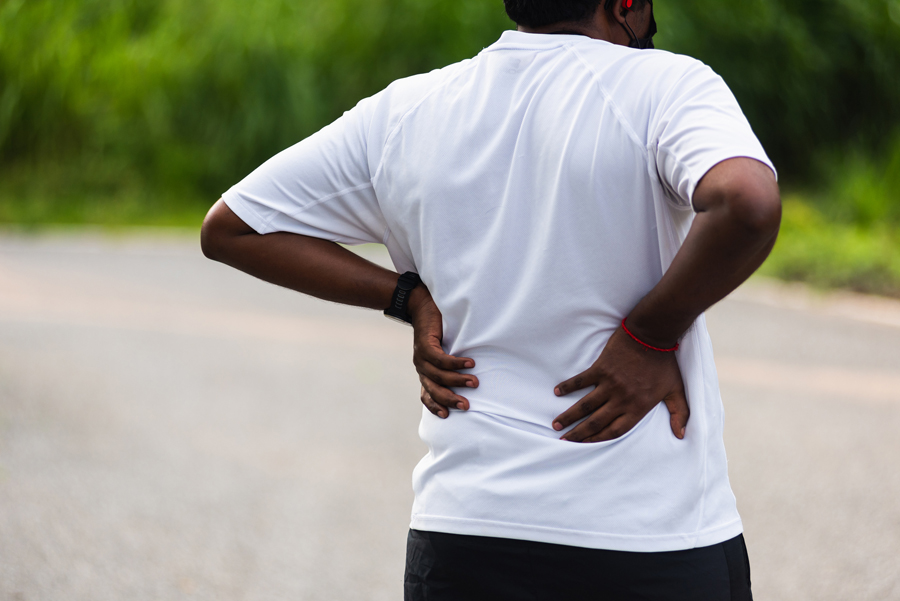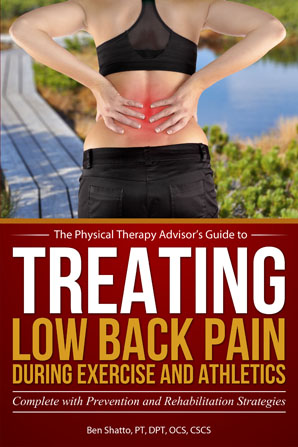Have you ever wondered what exactly makes your back pain worse? Why does your back continue to hurt on and off again? Why does it seem to “act up” right at the wrong time? Is it something you are doing? Is there something seriously wrong? Is it just bad luck?
These are all fantastic questions. It’s time to answer the age old question as to why your back keeps hurting. Here are the top reasons why your back may be hurting and what to do about it.

The Top Reasons Why Your Back may be Hurting:
You smoke or vape.
Smoking is a major risk factor for low back pain (LBP). The chemicals in cigarette smoke affect both the lunges’ ability to exchange oxygen and the body’s normal healing response. These chemicals alter the blood supply to the discs and other spinal structures which affects nutrient exchange and increases the risk of pain. Healing time for all medical conditions worsen with smoking.
You’re biologically male.
Males have a higher risk of LBP. Females tend to experience more cervical or neck pain. (Obviously, you have very little control over this factor other than the knowledge that you’re at an increased risk if you are a male.)
It may be your parents’ fault.
A family history of low back pain increases your risk. In some cases, this may be due to actual structural deformities which may be genetically linked. More commonly, it’s a learned behavior, such as chronic sitting and slouching (poor posture), that can lead to a higher risk of LBP.
You’re pregnant.
Pregnancy increases your risk for LBP due to structural changes as the baby develops and hormones change. The expectant mother releases relaxin, a hormone which loosens the whole body, to prepare for the baby’s delivery. Again, a risk worth taking! Most women can manage the pain by modifying posture and movements while learning techniques for self-management.
You don’t exercise.
A sedentary lifestyle will increase your risk for LBP. The spine is designed to work and move. In order for the spine to remain healthy, it requires exercise and movement.
You sit for more than 2 hours a day.
Sitting for a long period of time not only affects your general health status in a negative way, but it also increases your risk for LBP. It’s even worse if you’re a heavy equipment operator who sits on a vibrating surface.
You have poor posture.
In western culture, we spend most of our day sitting slouched or standing hunched over. This is an excellent way to increase your risk for LBP. It’s one of the major risk factors for disc herniation and development of spinal stenosis.
You don’t warm up before exercise.
This is a common mistake which can lead to injury. Jump out of your bed in the morning without warming up, and then start your exercise routine. (Please don’t!) Instead, prepare your body for challenging activities in order to avoid injury. A warm up should consist of a cardiovascular component and a dynamic stretching routine of the actual exercises you will be performing to insure you’re ready for the movement. This is also pertinent for weightlifting and running.
You keep moving even when you’re exhausted.
This is a common problem among CrossFitters (including myself). Just keep pushing yourself even when you can’t see straight. Typically, this results in poor technique which further increases your risk. Combine poor technique with muscles which can no longer perform the proper movement pattern, and you’re likely to become injured. High Intensity Training (HIT) is a wonderful form of exercise and has many health benefits as long as you’re able to properly perform the exercise.
You’re using poor technique.
Poor technique, along with feeling exhausted, often occurs when performing exercises that are too advanced. Performing unfamiliar lifting techniques or lifting too much weight will likely result in poor technique. Please see your coach, athletic trainer or physical therapist for the proper technique for your activity of choice.
Your training volume is too high.
Who needs a rest day? ALL of us can benefit from taking a break. Training every day without regard to rest is an excellent way to cause over training syndrome and injury to your back.
You’ve experienced prior episodes of LBP.
Once you have experienced LBP, you are more likely to have re-current episodes. This may be the major reason why your low back pain re-occurs. This is partially due to weakness in the deep multifidus muscles that help support the spine and prevent shearing forces. This weakness can be addressed with proper physical therapy intervention. The loss of structural strength is the primary reason why your back pain continues to re-occur, and this can be changed.
Core strength does matter, but it is likely not what you think. Most people don’t quite understand the relationship between the “core” and lumbar stabilization. It’s way more than just doing sit-ups. In fact, sit-ups may actually make your back pain worse.
Low back pain is a serious and debilitating condition. It will either most certainly affect you or someone close to you. Be mindful of your risk factors and be pro-active in maintaining a healthy back! The good news is that nearly all low back pain is mechanical (meaning there is a physical reason for the pain). There are physical treatment options that not only can help you recover from the pain, but also to avoid re-occurring back pain!
If you’re not sure how to effectively and safely exercise your back or if you’re already experiencing low back pain, be sure to check out my Treating Low Back Pain (LBP) during Exercise and Athletics Book and Video Package.
Treating low back pain does not need to be difficult or expensive. For the approximate price of just one co-pay to see a doctor, you will receive my easy to read book with step-by-step instructions and a complete video package designed to help you prevent and self-treat reoccurring low back pain episodes.
USE DISCOUNT CODE LBP AT CHECKOUT FOR 15% OFF!

If you have a question that you would like featured in an upcoming video or blog post, please comment below or submit your question to contact@thePhysicalTherapyAdvisor.com. In case you haven’t already, be sure to subscribe to my e-mail list and YouTube channel as well as join our community on Facebook by liking The Physical Therapy Advisor!
